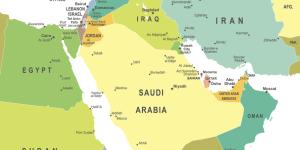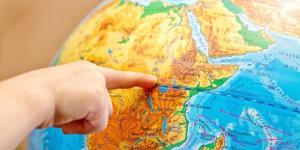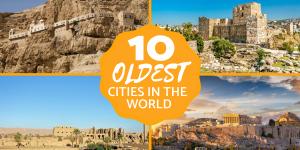What Are the Persian Gulf Countries


You must have surely heard about the "Persian Gulf countries" without really knowing what it was all about. The Persian Gulf countries are geographically located in the so-called Middle East region, a region straddling Europe and Asia. These are the countries bordering the Persian Gulf, which are part of the Indian Ocean. Discover the Persian Gulf Countries.
Gulf Cooperation Council countries
As we said in the introduction, the Persian Gulf countries are those countries located on the shores of the Persian Gulf. That being said, there are several definitions of "Persian Gulf countries" that include some countries or not depending on the definition.
Initially, the countries that are part of the Arab States Gulf Cooperation Council, or simply the Gulf Cooperation Council, can be considered as "the Gulf countries". This Council brings together the following six countries:
- Saudi Arabia. Capital: Riyadh. Population: 30,770,375. Language: Arabic
- Oman. Capital: Muscat. Population: 4 000 345 inhab. Language: Arabic
- Kuwait. Capital city: Kuwait City. Population: 3 250 496 inhab. Language: Arabic
- Bahrain: Capital. Manama. Population: 1 346 6131 hab. Language: Arabic
- United Arab Emirates. Capital: Abu Dhabi. Population: 1 346 6131 hab. Language: Arabic
- Qatar. Capital: Doha. Population: 2 463 4601 hab. Language: Arabic
These six countries all have several things in common: absolute monarchies, the Arabic languages and the Sunni Muslim religion, and their oil-based economy, which earned them the nickname of the Petro-monarchies. Cooperation between these countries through this council is mainly military, and aims to strengthen the political and economic stability of the region in the conflicts of the neighboring countries of Iraq and Syria, as well as to counter the influence of Iran, which practices a Shiite Islam and often opposes them.

Arabic Persian Gulf countries
When referring to the Gulf countries, the Arab countries of the Gulf are sometimes referred to as Arabic-speaking countries and located geographically on the Persian Gulf, so Iraq is often included because it has access, although restricted, to Persian waters. But Iraq is not part of the Gulf Cooperation Council because, unlike the countries mentioned above, it is not a monarchy. Iraq has been a republic since 1958 when the monarchy was overthrown, and the country was a military dictatorship for a long time, especially under the regime of Saddam Hussein, who governed before it was overthrown by the American-led international coalition in 2005.
The country is the most unstable of the Gulf countries, having experienced several military coups, several conflicts (the Gulf wars) and is now in touch with the Islamic State and terrorism over a large part of its territory.

Geographical boundaries of the Persian gulf
From a strictly geographical point of view, we should also add Iran as a country of the Gulf, because it shares the shore of the Gulf opposite to the Arab countries. But from a political and cultural point of view, Iran is rather opposed to the other Gulf countries and they have a rather ambivalent and complicated relationship. Indeed culturally and ethnically, Iran is Persian, unlike the other countries that are Arab. Moreover, the Islam practiced in Iran is Shiite while that of the Arab countries is majorly Sunni. As a result, Iran does not maintain a co-operative relationship with other Gulf countries.

If you want to read similar articles to What Are the Persian Gulf Countries, we recommend you visit our Learning category.






